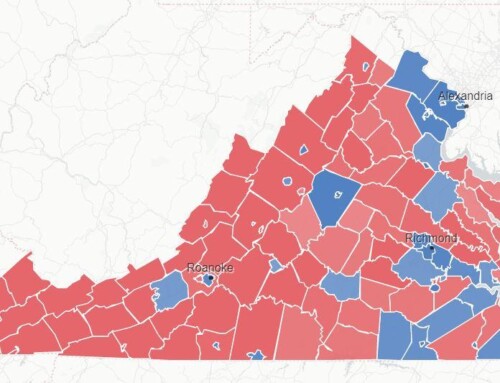56 Changes To ObamaCare So Far, With Two New Additions
By Grace-Marie Turner
Forbes
10/9/15
————————————————————
By our count at the Galen Institute, more than 56 significant changes (http://www.galen.org/topics/changes-to-obamacare-so-far/?mc_cid=d018d868f4&mc_eid=
Our latest count has added one change made by the Obama administration contrary to statutory authority, and one change passed through both houses of Congress and signed into law by the president, following Constitutional processes. Our latest additions:
* Illegal rule regarding out-of-pocket costs. HHS issued a rule (http://www.gpo.gov/fdsys/pkg/FR-2015-02-27/pdf/2015-03751.pdf?mc_cid=d018d868f4&mc_eid=[UNIQID]) that changes the annual limits on employee cost-sharing defined in the ACA, forcing many employers to increase premiums (http://khn.org/news/business-leaders-gop-question-hhs-change-on-families-out-of-pocket-limits/?mc_cid=d018d868f4&mc_eid=[UNIQID]) to accommodate the requirements. The administration failed to cite a single statute (http://www.americanbenefitscouncil.org/documents2015/Ryan-Upton-Kline_OutofPocketLimits_8-7-15.pdf?mc_cid=d018d868f4&mc_eid=[UNIQID]) providing HHS the authority to make the change. (February 27, 2015)
* Protecting small businesses. Congress passed and the president signed (http://www.usatoday.com/story/news/politics/2015/10/08/obama-signs-bill-making-changes-obamacare/73535758/?mc_cid=d018d868f4&mc_eid=[UNIQID]) the Protecting Affordable Coverage for Employees (PACE) Act to protect businesses with 51 to100 employees from ACA rules that would have led to premium increases of 18%, impacting 150,000 businesses and 3 million workers. (October 7, 2015)
The administration:
Illegal rule regarding out-of-pocket costs: The ACA limits how much consumers can be required to pay out of pocket for medical care each year. Many employers and key congressional committee chairmen say the administration acted illegally in issuing a rule to change the out-of-pocket limits without statutory authority.
Under the health law, the maximum that a consumer with individual coverage can be required to pay in deductibles, copayments and coinsurance for in-network care is $6,600. People with family plans max out at $13,200 (https://www.healthcare.gov/glossary/out-of-pocket-maximum-limit/?mc_cid=d018d868f4&mc_eid=[UNIQID]) .
In a rule published in February (http://www.gpo.gov/fdsys/pkg/FR-2015-02-27/pdf/2015-03751.pdf?mc_cid=d018d868f4&mc_eid=[UNIQID]) , the administration said, starting in 2016, individuals must not be held financially responsible for more than the individual annual maximum spending limit, regardless of the type of plan they are in. Therefore, even if a family plan has a $13,700 maximum out-of-pocket limit, no one in the family must pay more than $6,850 a year before the employer or insurer starts covering that person’s medical bills at 100%.
In an August letter (http://op.bna.com/pen.nsf/id/krkl-9z9ppw/$File/2015%2008%2007_Ryan-Upton-Kline_Out%20of%20Pocket%20Limits.pdf?mc_cid=d018d868f4&mc_eid=[UNIQID]) to Health and Human Services Secretary Sylvia Mathews Burwell, the chairmen of the House committees on Ways and Means, Energy and Commerce, and Education and the Workforce write, “We have become increasingly concerned about agencies’ actions to implement the law that appear to exceed the authority delegated to them by Congress.”
Employers say the change will force them to raise employee health insurance premiums and force other distortions in coverage to adjust to the new HHS rule.
The Congress:
Starting in 2016, businesses with 51 to 100 employees were going to be forced into health insurance pools that could have increased premiums for most of them by an average of 18%. Because of the employer mandate, they would have been forced to purchase health insurance that, for most, would be much more expensive.
The change would have affected more than 150,000 businesses and more than three million workers.
Currently, health insurers have broad flexibility (http://www.forbes.com/sites/gracemarieturner/2015/07/29/small-businesses-face-new-obamacare-threat/?mc_cid=d018d868f4&mc_eid=[UNIQID]) in setting premiums for these mid-sized employers, giving them flexibility in benefit structure, rating rules, etc. But the ACA was going to force all small businesses with 1 to 100 employees into the same pool in 2016 and beyond.
An analysis by the actuarial firm Oliver Wyman estimates that nearly two thirds of workers (64%) in companies with 51 to 100 employees would have received premium increases averaging 18% directly as a result of ObamaCare rating rules that remove much of the flexibility in pricing of premiums.
The Protecting Affordable Coverage for Employees Act passed by both chambers without a single no vote and was signed by the president on October 7, 2015. PACE gives states the ability to decide how to classify businesses of 51 to 100 employees. Reducing workers’ insurance premiums means increasing their taxable income, resulting in a $280 million in additional revenues to the federal government over 10 years, according to the CBO.
Grace-Marie Turner is president of the Galen Institute (galen.org (http://www.galen.org/?mc_cid=d018d868f4&mc_eid=[UNIQID]) ), a non-profit research organization focusing on market-based health policy solutions.
Posted on Forbes (http://www.forbes.com/sites/gracemarieturner/2015/10/09/56-changes-to-obamacare-two-new-additions/?mc_cid=d018d868f4&mc_eid=[UNIQID]) , October 9, 2015.
Please visit us at ObamaCareWatch.org (http://obamacarewatch.org/?mc_cid=d018d868f4&mc_eid=[UNIQID]) . Our focus is on news from the pro-market side of the ObamaCare debate. And please visit our experts page for names and contact information for dozens of top health policy experts from academic institutions and market-oriented think tanks around the country.
============================================================
** f






